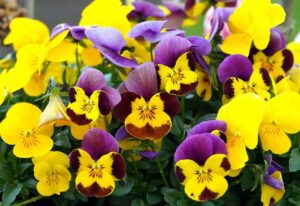In guide, we’ll explore some of the best flowering shrubs ideal for Zone 5, discussing their characteristics, care requirements, and ways to incorporate them into your garden design.
Forsythia
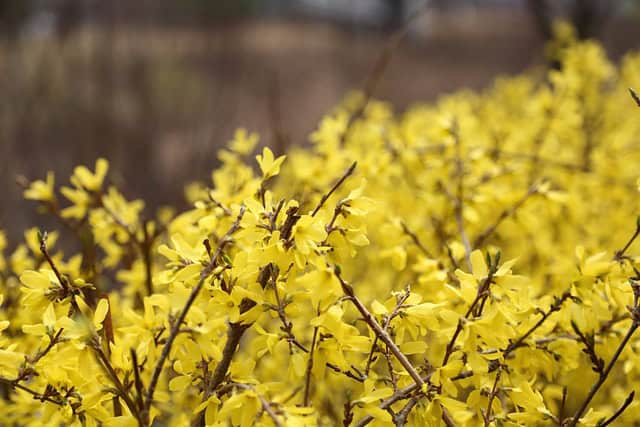
Forsythia, often one of the first shrubs to bloom in spring, is renowned for its bright yellow flowers that herald the end of winter. This hardy shrub can grow anywhere between 3 feet to 10 feet in height, depending on the variety. Forsythia thrives best in full sun but can tolerate partial shade, making it versatile for various garden settings.
One of the appealing aspects of forsythia is its ease of care. It requires well-drained soil, and once established, it’s drought tolerant. Pruning is best done immediately after flowering to encourage healthy growth for the next season.
Forsythia can be used as a specimen plant or planted in mass for a dramatic display. The contrast of its golden blooms against emerging green foliage can create a stunning focal point in your spring garden. It also makes an excellent backdrop for perennials or annuals, showcasing their colors beautifully.
Hydrangea

Hydrangeas are beloved for their large, showy flower clusters and come in numerous varieties suited for Zone 5 gardens. The bigleaf hydrangea (Hydrangea macrophylla) is especially popular for its capability to produce blooms in varying hues of pink, blue, or white, depending on the soil pH. Other varieties, such as the panicle hydrangea (Hydrangea paniculata), are known for their cone-shaped blooms and are equally stunning.
These shrubs prefer a spot with some afternoon shade, particularly in hotter regions, and thrive in rich, well-drained soil. Regular watering is crucial, especially during dry spells, to maintain their lush appearance. Pruning needs vary by variety; for instance, bigleaf hydrangeas bloom on old wood and should be pruned after flowering, while panicle hydrangeas bloom on new wood and can be pruned in late winter or early spring.
Incorporating hydrangeas into your garden offers not only breathtaking beauty but also a long blooming season, typically running from late spring through to autumn. Plant them along pathways or as part of a mixed border to enjoy their dramatic presence throughout the growing season.
Spirea

Spirea is a fantastic choice for gardeners looking to add both beauty and resilience to their landscape. Known for their exquisite blooms and varying foliage colors, spireas can range from low-growing varieties to taller forms reaching up to 6 feet. The most common bloom colors include pink, white, and red, depending on the variety.
These shrubs thrive in well-drained soil and full sun to partial shade. They have moderate water needs and are relatively low maintenance, requiring minimal pruning. The best time to prune spireas is in late winter or early spring, just before new growth begins. This promotes bushier growth and encourages more prolific flowering.
Spireas are excellent for mass planting, providing a bright, colorful display from spring through the summer. Their delicate flowers attract bees and butterflies, further enhancing your garden’s biodiversity. Furthermore, the vibrant fall foliage adds another layer of interest, transitioning from greens to warm oranges and reds before winter sets in.
Weigela
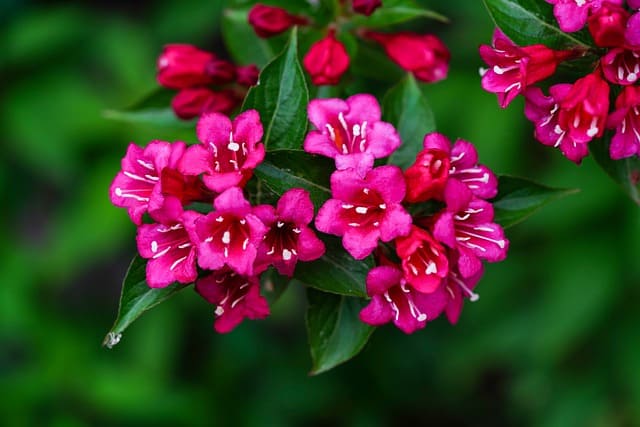
Weigela shrubs are known for their stunning funnel-shaped flowers that attract hummingbirds and pollinators, making them a beautiful addition to any garden. They can vary in height from 3 to 6 feet, and their blooms come in shades of pink, red, and white, creating a magnificent show during late spring and early summer.
These adaptable shrubs thrive in well-drained soil and prefer full sun but can tolerate partial shade. Regular watering during dry spells will keep them healthy. Weigelas bloom on old wood, so it’s important to prune them right after flowering to encourage fresh growth for the next season.
Incorporating weigela into your landscape is an excellent way to add texture and color. They can be planted as a focal point or as part of a mixed border. Their arching branches create a lovely silhouette, especially when planted alongside other shrubs or perennials with contrasting forms and colors.
Lilac
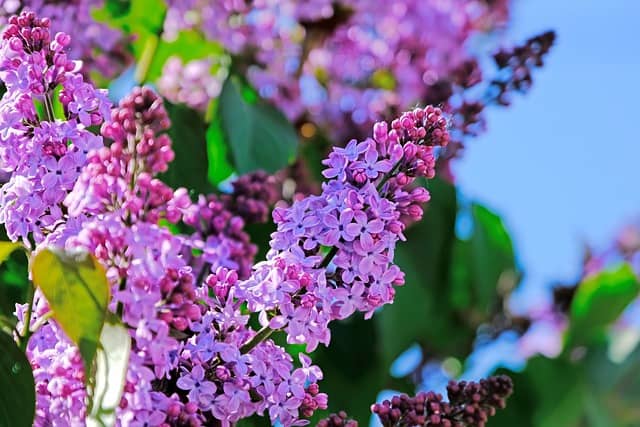
Lilacs are cherished for their fragrant, showy blooms in spring, exuding a delightful perfume that can fill your garden with an enchanting aroma. Available in various colors, including purple, white, and pink, these shrubs can range from 5 to 15 feet tall. Common lilac (Syringa vulgaris) is particularly popular for its classic beauty.
Lilacs prefer full sun and well-drained soil. Once established, they are drought-tolerant and can thrive in less-than-ideal soil conditions. Pruning should be done immediately after flowering to maintain shape and encourage new growth.
These timeless shrubs are perfect for creating a classic cottage garden aesthetic. They look stunning when planted in groups, where their fragrant blooms can be enjoyed up close. For a unique look, try blending them with earlier blooming spring flowering bulbs, allowing for a delightful transition in your garden’s palette.
Rose of Sharon
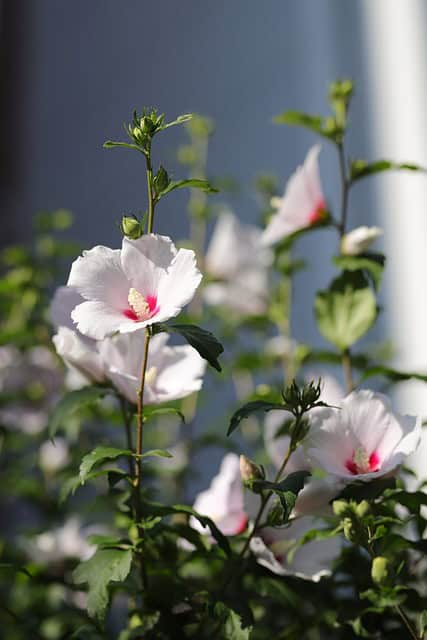
The Rose of Sharon (Hibiscus syriacus) is a deciduous shrub renowned for its stunning, tropical-looking blooms, which can come in various colors—pink, white, purple, or blue. This hardy plant typically grows 8 to 12 feet tall and blooms in late summer, filling the garden with color when many other plants are fading.
Rose of Sharon thrives in full sun and is tolerant of drought once established, making it a low-maintenance option for busy gardeners. It prefers well-drained soil and, while it generally requires little pruning, cutting back in late winter can encourage a denser growth habit.
This shrub serves as an excellent specimen plant or can be used in informal hedges, providing both beauty and privacy. Its late summer blooms are a magnet for butterflies, ensuring your garden remains lively and vibrant. The stark contrast of flowers against the green foliage can create a stunning visual interest.
Azalea
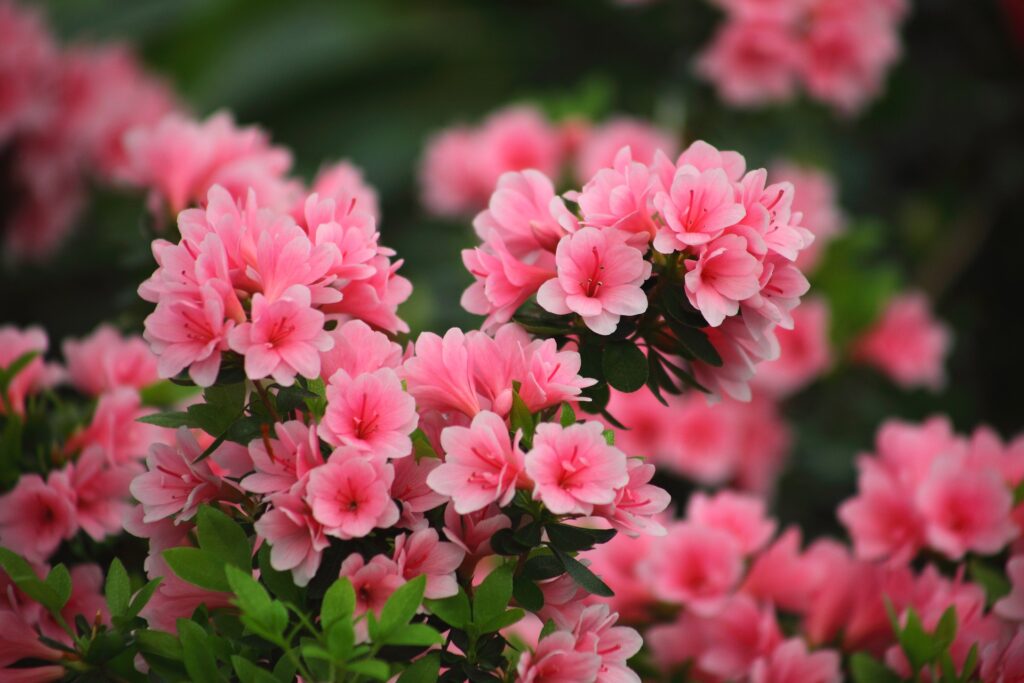
Azaleas are prized for their breathtaking blooms that can brighten any garden in the spring. These shrubs come in a multitude of colors, from vibrant reds to soft pastels, and can range from 2 to 10 feet in height, depending on the species. They thrive in well-drained, acidic soils and prefer partial shade, making them perfect for woodland gardens or shady nooks.
While azaleas are relatively low-maintenance, they do benefit from regular watering, especially during dry spells. Mulching around the base of the plant helps retain moisture and keep the roots cool. Pruning is best done right after flowering to maintain a neat shape and encourage future blooms.
Incorporating azaleas into your landscape can create a stunning spring display, especially when planted in groups or drifts. Their vibrant flowers can serve as a gorgeous backdrop for other early perennials and create a sense of harmony in your garden.
Flowering Quince
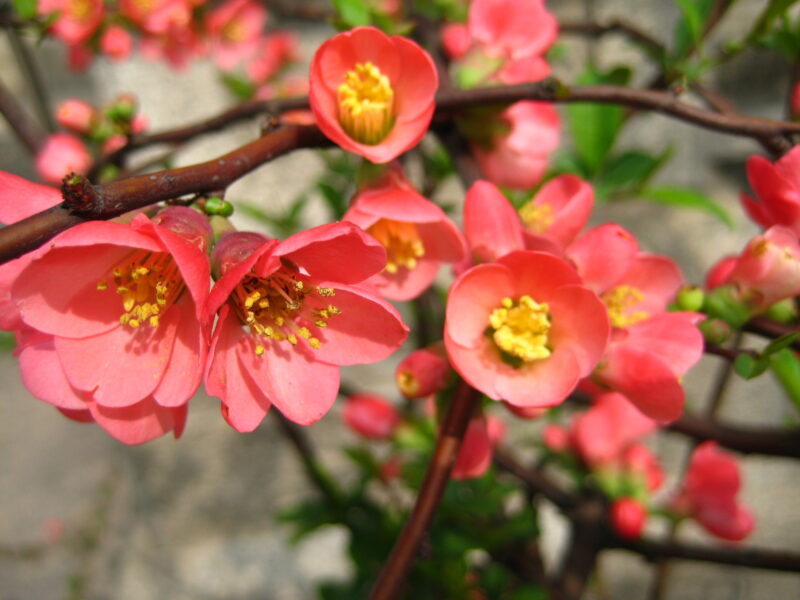
Flowering quince (Chaenomeles speciosa) is an excellent choice if you’re looking for an early spring bloomer. This shrub boasts stunning, bright flowers in shades of red, pink, or white, appearing even before the leaves unfurl. Reaching heights of 3 to 6 feet, flower quince is a compact and hardy option for smaller gardens.
These shrubs prefer full sun and well-drained soil. They are drought tolerant once established, making them a low-maintenance addition. Light pruning can be done after flowering to shape the shrub and remove any dead or crossing branches.
Flowering quince is particularly lovely when used in hedges or as a specimen plant. The stunning blooms create a focal interest, and the thorny branches can provide a natural deterrent for unwanted intruders. Additionally, its lush green foliage later in the season complements many other plants beautifully.
Butterfly Bush
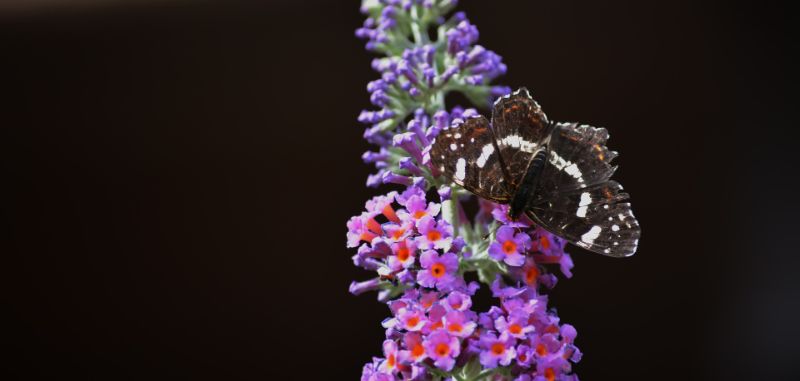
As the name suggests, the butterfly bush (Buddleja davidii) is a magnet for butterflies and hummingbirds, making it an enjoyable addition to any garden. Known for its long, arching flower spikes, which bloom in hues of purple, pink, white, or blue, this shrub can grow between 4 and 12 feet tall, depending on the variety.
Butterfly bushes thrive best in full sun and well-drained soil. They are relatively low maintenance but benefit from regular watering during dry spells. Pruning is essential to encourage healthy blooms; cutting them back to about a foot above the ground in late winter or early spring will yield beautiful flowering during the warmer months.
These shrubs provide a beautiful display in summer and fall and can be easily incorporated into flowering borders or butterfly gardens. Adding a few butterfly bushes to your landscape will draw in pollinators and provide continued beauty well into the late garden season.
Viburnum
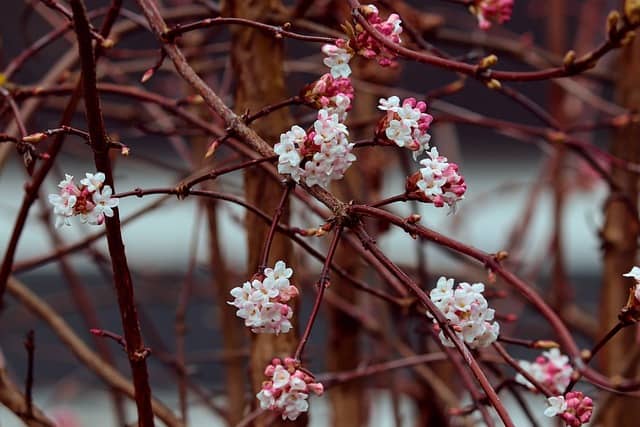
Viburnum is a diverse genus of shrubs, offering a vast selection of sizes, forms, and flower colors. Many viburnum species are well-suited for Zone 5, showcasing white, pink, or even blue flowers that appear in dense clusters during spring. They typically reach heights of 4 to 12 feet.
These hardy shrubs thrive in full sun to partial shade and prefer moist, well-drained soils. Some viburnum types are also quite tolerant of drought once established. Pruning is best carried out right after flowering to maintain shape and encourage new growth.
Viburnums serve multiple purposes in the landscape. They make excellent hedges, privacy screens, or specimen plants, adding visual appeal throughout spring and fall when their foliage transforms into beautiful autumn colors. The delightful fragrance of some viburnum blooms also adds a sensory element to your outdoor space.
Mock Orange
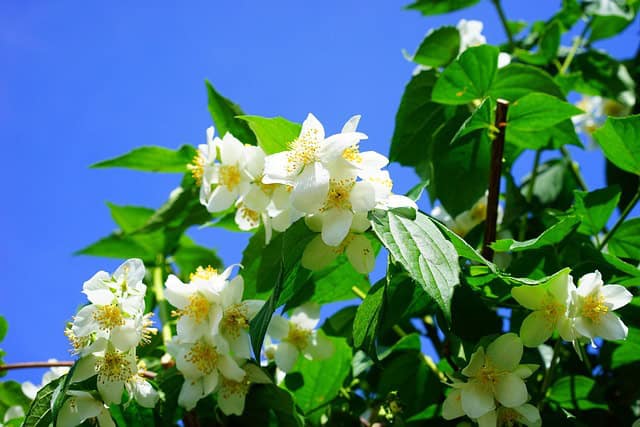
Mock orange (Philadelphus spp.) is adored for its beautiful, fragrant white flowers that bloom in late spring to early summer. Ranging from 3 to 10 feet tall, these adaptable shrubs are perfect for adding a touch of elegance to your garden.
These shrubs prefer full sun and well-drained soil. Mock oranges are relatively drought tolerant once established. They can benefit from light pruning after flowering to maintain their size and promote bushy growth.
Incorporating mock orange into your landscape design can create a stunning aromatic experience. They work beautifully when paired with other flowering plants, and their clean, fresh look can brighten up a garden during the blooming period. Planting mock orange near patios or pathways allows you to enjoy their delightful fragrance up close.
Conclusion
Choosing flowering shrubs for your Zone 5 garden is an opportunity to create a vibrant and varied landscape that delights the senses throughout the seasons. Each of the shrubs highlighted in this post brings unique colors, textures, and fragrances, allowing gardeners to express their creativity while attracting pollinators and providing habitats for wildlife.




